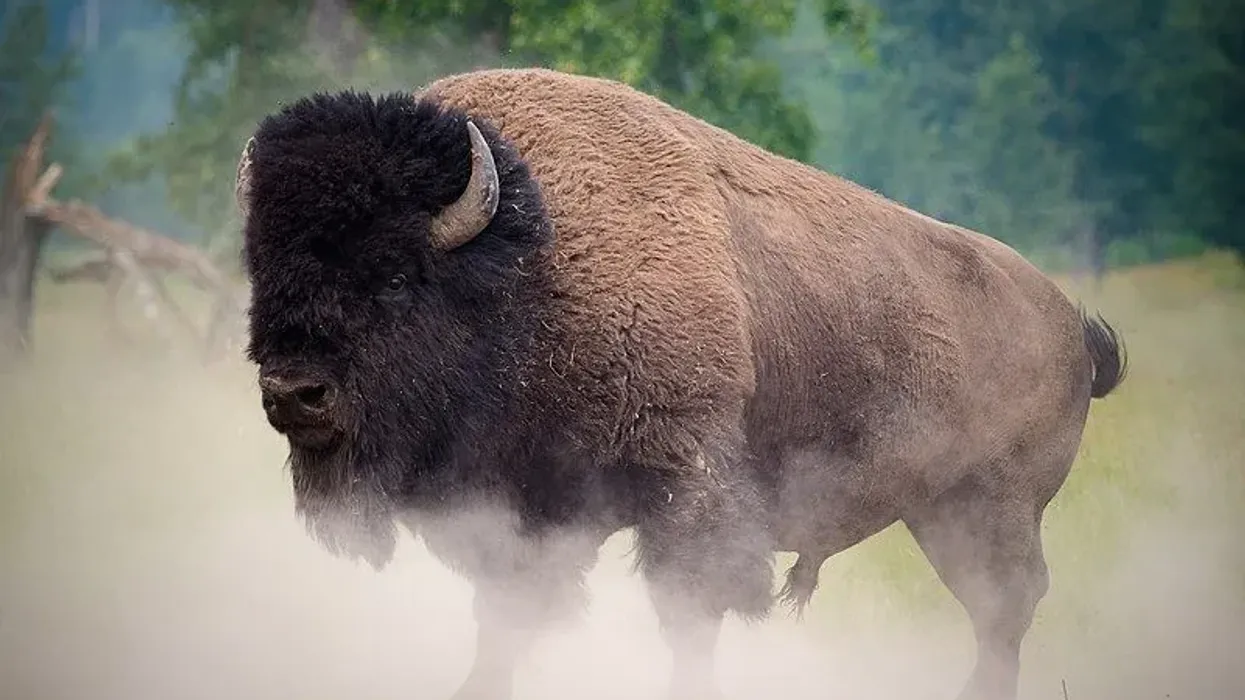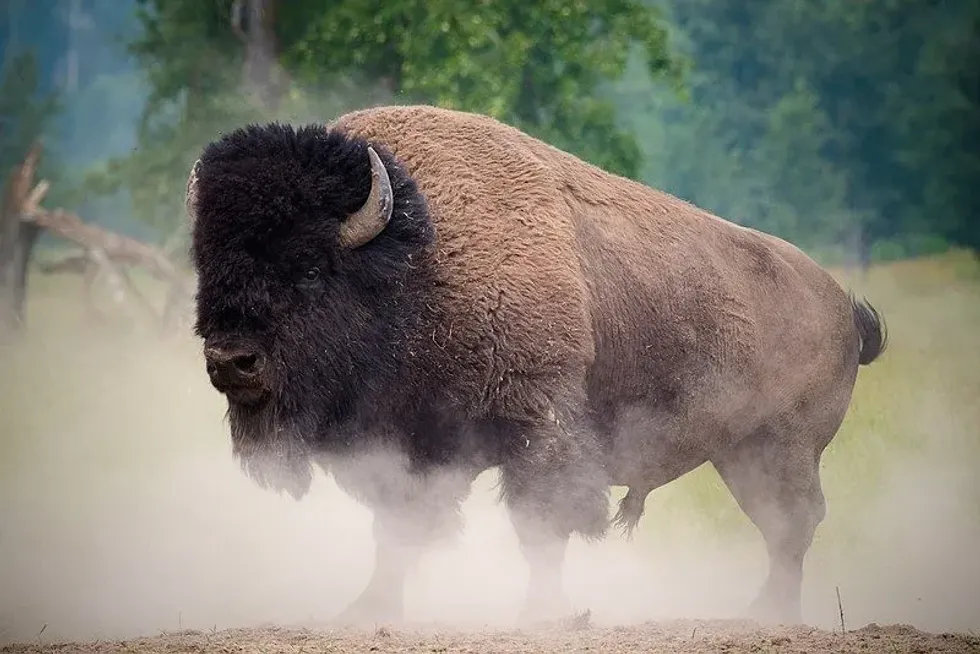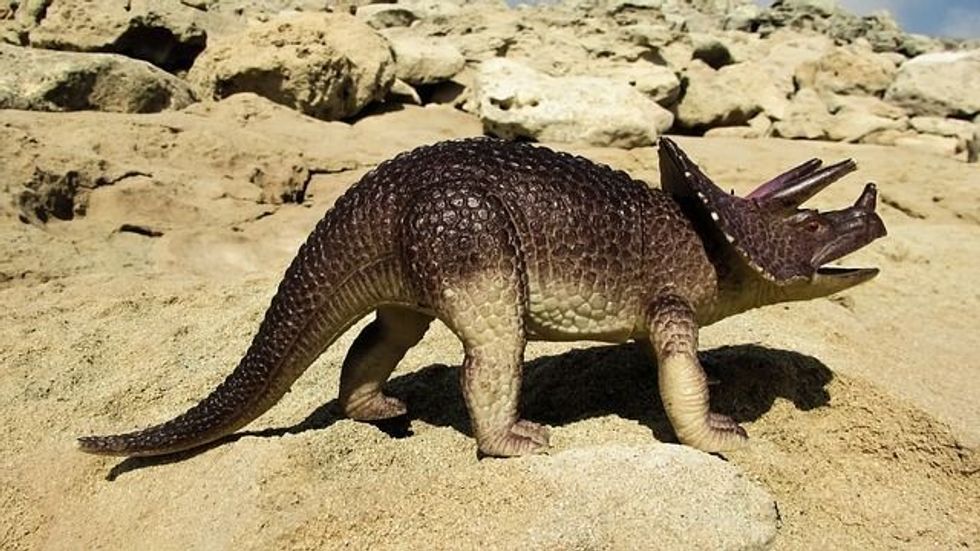The American bison is a species of bison that were earlier found in North America with vast populations of millions. There are two subspecies known to us namely the plains bison (Bison bison bison) and the wood bison (Bison bison athabascae).
The plains bison (bison bison bison) had an overflowing population on the Great Plains, but due to excessive commercial hunting and slaughtering their population declined and these species of bison came near the possibility of getting extinct.
With conservation efforts from private landowners, state and federal agencies their population is being monitored in few places as Western Dakota, Wyoming, Montana, Colorado, and Texas.
Plains bison are extremely quick, intelligent, and herd-oriented animals. Read to learn more!
You can also check out amazing facts about highland cattle and blue sheep!
Plains Bison Interesting Facts
What type of animal is a plains bison?
Plains bison (Bison bison bison) belongs to the family of Bovidae order Artiodactyla. These animals live in herds of 30 individuals and graze on grasses throughout the year. Male bison will establish a supremacy ranking that keeps changing during the breeding season. Plains bison are well adapted to their native habitat of meadows and grasslands regions.
What class of animal does a plains bison belong to?
Plains bison belong to the Mammalia class of animals. The presence of mammary glands to feed their young ones, with three ear bones, fur coat or hair, and the neocortex (region of the brain) are what qualifies plains bison as a mammal. In their range, these herbivorous animals control the plant communities by grazing.
How many plains bison are there in the world?
The total population of plains bison around the world is less than 20,000 individuals with all of them spread across the regions of North America. With the largest herd of 4,500 available in Yellowstone National Park.
Where do plains bison live?
Plains bison were earlier found in the vast areas of Northern Mexico to Alaska, but with the rapid decline in their population due to overhunting and commercial slaughtering, these animals are now found in the National Parks like the Yellowstone National Park in Wyoming, Northwest Canada, and Wolf Buffalo Park.
What is a plains bison's habitat?
Plains bison were earlier found throughout the Savannas and grasslands of North America. These animals prefer a semi-desert habitat with suitable grazing land. Due to their limited populations, these animals occupy all the elevation of the protected areas.
Bison appear to have been less abundant east of the Appalachian Mountains and rare within the forested mountains. An Englishman first reported bison near the Potomac River in 1612.
Who do plains bison live with?
Plains bison are social animals and they are found together in groups of 30 individuals according to their habitat, age, season, and sex. The female (cow) group comprises males under the age of three years old and a few older males and males enter these groups during the breeding season.
Males (bulls) that are higher on the hierarchy, breed more often compared to the lower-ranked bulls.
How long does a plains bison live?
Plains bison have a lifespan of up to 10-20 years in the wild.
How do they reproduce?
Female plains bison reach their sexual maturity at the age of two years old, giving birth to a calf in a two to three years gap with a gestation period of nine months.
Whereas the males sexually mature at the age of 3 years but usually breed only if they reach the age of six years old when they grow stronger to compete with other males for mating rights.
The breeding season of plains bison starts from the month of June extending till September.
Females give birth to their calves away from the herd in an area that has a good cover to protect them from predators, while the males do not participate in raising the calves. A newborn calf weighs around 33-55.1 lb (15-25 kg), with red color fur which turns brown three months after its birth.
Females will nurse and take care of their calves for almost seven to eight months.
What is their conservation status?
As per the IUCN Red List, the plains bison are listed as Near Threatened species due to the decline of their vast population of millions because of overhunting and commercial slaughtering.
These endangered animals had an overflowing population on the Great Plains and are found in small herds in the conservation reserves made by private landowners, state and federal agencies.
These bison herds have survived the ice age but now they are on the verge of getting extinct.
Defenders of wildlife support the conservation of bison on both tribal and public lands which have helped in increasing the bison numbers in the wild and national parks like the Wind Cave National Park and Yellowstone National Park.
Plains Bison Fun Facts
What do plains bison look like?

Plains bison (bison bison bison) are smaller in size when compared to the other subspecies of wood bison. A plains bison has enormous forequarters and heads which are out of proportion with the smaller hindquarters.
Their backbone begins to rise from hips and reaches the maximum height till the front shoulder, their shoulder hump declines straight down the neck. These animals have horns that curve upward which are heavier and large in males when compared to females.
Plains bison has a dark brown coat, and during the winter season their winter coat changes its color to light brown, and when the weather is warmer their hair loosens up and hangs in patches till it completely sheds and gets replaced with new hairs.
Plains bison roll in the dirt to prevent the biting of flies and shed their shaggy fur.
Older animals have long hairs which resemble a goatee and cover the lower part of their head.
How cute are they?
These buffalo relatives are docile in nature and just like to graze and adults are not cute per se, however, calves are cute and playful.
How do they communicate?
Plains bison have an excellent sense of smell and hearing, they can detect large objects from 0.6 mi (1 km) and can see a moving object from 1.2 mi (2 km) away. Plains bison also communicate with each other vocally using snorts and grunts.
How big is a plains bison?
Plains bison are large in size when compared to other bison. A fully grown plains bison can grow up to 83.8-149.6 in (212.8-380 cm) in total body length, relatively smaller than a regular bison and 4.9-6.1 ft (1.4-1.8 m) tall at shoulder height, two times shorter than the wild yak.
How fast can a plains bison move?
A plains bison can run 40 mph (64.3 kph) while escaping and counter-attacking its predators, even faster than a cape buffalo.
How much does a plains bison weigh?
The plains bison are large-sized animals, a male plains bison is much bulkier than a female. A fully grown adult male is 1,014-2,178 lb (460-988 kg ) in weight and an adult female can weigh up to 992-1,097 lb (450-497.5 kg).
What are the male and female names of the species?
A male plains bison is called a bull, and the female is called a cow.
What would you call a baby plains bison?
A baby bison is called a calf. Calves start grazing six days after they are born and are capable of running and communicating within a few hours of their birth. The plains bison calf is similar in appearance to a red dog.
What do they eat?
Plains bison graze grasses all year round, primarily feeding on grasses. These animals are also seen feeding on vegetation, herbs, twigs, and shrubs.
Are they poisonous?
No, they are not poisonous at all. These animals are usually docile and will not attack unless provoked.
Would they make a good pet?
No, you can not keep the plains bison as a pet. Their large size and unique habitat requirement are major concerns for them to be kept as pets and it is also illegal to keep these animals as pets because their conservation status is listed as Near Threatened on the IUCN Red List.
Did you know...
During the winter seasons, the plains bison uses its large head to remove the snow and reach the grass to feed on. Plains bison are intimidating beasts and massive land animals in North America.
The male plains bison produces a particular roar that can be heard from several miles during the breeding season.
Native Americans of the Great Basin tribes have relied on the plains bison for their own survival, these animals have been used by them for food, shelter, tools, clothing, and jewelry during ceremonies. The Great Basin tribes were mostly dependent on the bison.
American bisons need water to drink every day, during the winter season these animals fulfill their water requirements by eating the snow.
American bison bulls tend to live alone with other males throughout the year but they are seen in groups of females only during the breeding season.
American bison is the national mammal of the United States. They have been featured on a range of American currencies and the most famous being the 'buffalo nickels' during the years 1913 to 1938. They joined the bald eagle as an American symbol.
Theodore Roosevelt also known as Teddy Roosevelt the 26th United States President was known for his love of nature, the legacy of conservation action, and commitment to ethical hunting was the one who saved the American bison.
Bison antiquus is the ancient bison that has gone extinct, these animals were found in the Late Pleistocene of North America around 10,000 years ago in the Great Plains.
The steppe bison is also an extinct species of bison that were earlier found in Europe, Asia, North America, Canada, and Mexico as they made their way from the Bering Land Bridge to North America. Their ancestors known as bison bonasus evolved in the grasslands of Asia and Europe during the early part of the Ice Age.
The Yellowstone National Park bison herds are the largest and oldest public bison herds in the United States.
In The Wind Cave National Park, bison (buffalo) herds are made up of 250-400 individual American bisons which are found in South Dakota, USA.
Difference between a wood bison and plains bison
Plains bison have an enormous head with a short nose and a clear brown shaggy cape that covers the upper part of their bodies, whereas the wood bison is much larger in size when compared to the plains bison with a large triangular-shaped head, smaller cape, and head hair.
The shoulder hump of wood bison is bigger when compared to the plains bison.
Bison size comparisons
The plains bison male can grow up to 83.8-149.6 in (212.8-380 cm), which is the largest size when compared to other bison. A fully grown plains bison can reach the weight of 794-2182.5 lb (360-990 kg), twice as large as a Bactrian camel, and hence, are considered to be the largest species of bison.
Here at Kidadl, we have carefully created lots of interesting family-friendly animal facts for everyone to discover! Learn more about some other mammals from our bharal facts and Nubian ibex facts pages.
You can even occupy yourself at home by coloring in one of our free printable plains bison coloring pages.









